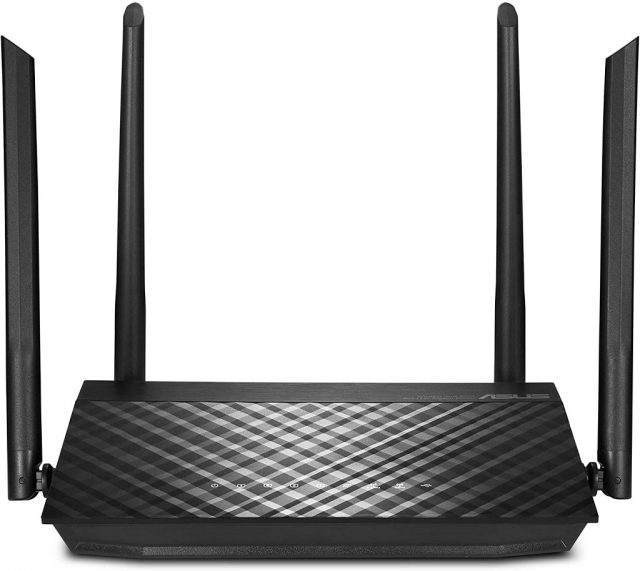This is not a trivial task as not all routers are the same. Below, we highlight some of the most important features that you should consider before buying the best wifi routers. If your primary focus is finding something that provides the fastest speeds possible, then check out our best Wi-Fi routers. While this does not account for every single feature that might interest you, it provides you with enough information to help you make an informed decision. If you want to get your router without wasting time online, the bestproda is perfect for you.
What to consider when buying a Wi-Fi router?
You should consider the following factors before getting a Wi-Fi router:
1. WI-FI STANDARDS SUPPORTED BY THE ROUTER
A Wi-Fi router can be tested in different ways, but one of the easiest ways is to check if it supports older standards or newer ones. For example, 802.11g is an older standard, while 802.1n is relatively new and super fast. Most devices support both 802.11b and 802.11n standards, but support is not guaranteed for every single device right from the start. However, even if you have an 802.11b device, there’s no harm in purchasing a router that supports 802.11n as it will also work with your router and provide better speeds when your devices eventually implement 802.1p.
Turning to Wi-Fi routers, some may support one or more of the following wireless networking standards: 802.11a, 802.11d, 802.11g, 802.11h, 802.11i, and 802.1q. These protocols comprise the basis for devices like PCs, phones, printers, NAS storage units and so on as well as being the most popular ways of connecting to a wireless router.
2. WI-FI STANDARD SPEEDS:
The speed of a wireless router is measured by how fast data packets can be transmitted and received in relation to the range of the signal. These speeds are not always as fast as what’s promised, but they should improve over time from generation to generation (for example, G to N).
Below you can see a quick chart between some of the most popular standards supported today along with their maximum theoretical transfer rates, maximum effective throughputs and actual real-life speeds:
- 11b: 11 Mbps, 5 Mbps (max), 1 – 2 Mbps (actual)
- 11g: 54 Mbps, 28 Mbps (max), 6 – 10 Mbps (actual)
- 11n: 300+Mbps, 130+Mbps (max), 50 – 75 Mbps (actual)
- 11ac or IEEE 802.11ad (WiGig): 2,500+Mbps, 1,300+Mbps (max), 300+ Mbps (actual)
3. RANGE:
A wireless router is only as strong as its signal strength, which directly affects your range or distance from it. So choosing a Wi-Fi router with an extended range can help you avoid placing it too close to other electronic devices like an iPhone charger, for example. The range of a Wi-Fi network depends on several factors, including the data throughput, the flatness of terrain/building material, weather conditions and even how many walls are there between the device and the Wi-Fi router.
4. CHANNELS:
Each Wi-Fi router has a certain amount of channels that can be used to transmit your data (2.4GHz and 5GHz). Think of these like lanes on the highway. When multiple drivers try to use the same lane at once, it causes traffic jams resulting in slow Internet speed or no connection! Therefore you might want to pick a wireless router with many available channels so there is less congestion and better performance. Also, keep in mind only one device can use each channel, so changing them manually may help avoid interference with neighbors’ routers.
5. NUMBER OF DEVICES:
The number of devices connected to your network will also affect performance since more users mean higher bandwidth usage, resulting in slower speeds. On average, the more users that broadcast over your Wi-Fi network, the lesser your Internet speed becomes as more people jack up the bandwidth. It is therefore important to consider how many devices will be connected at once since this will directly affect performance for everyone.
5. SPEED:
Depending on which standard you go with, and how fast your ISP is, and factors such as distance from router or interference from other electronic devices – e.g., microwaves being used nearby, etc., you could get anywhere between 15Mbps to 100+ Mbps! The actual value of this number depends heavily on all of these variables, so don’t rely too heavily on it when deciding what wireless router to purchase.
6. NUMBER OF BANDWIDTHS:
This is the number of shared connections that multiple users can use at once – like lanes on a highway, more bandwidths means fewer traffic jams or data usage for each user! This is important because if a router doesn’t have enough bandwidth (lanes), everyone connected will suffer slower speeds as they compete over one connection. One way to avoid this is to use channel binding, which allows you to use different channels simultaneously, so fewer devices are fighting over the same lane. A wireless router with two frequency bands (2.4GHz and 5GHz) will also allow double the bandwidth.
7. NUMBER OF LAN PORTS:
The number of wired connections that can be simultaneously used for either Ethernet or the Internet is always an important factor. For example, a wireless router with four (4) LAN ports offers maximum connectivity and enables users to game, stream high-quality videos and perform other bandwidth-intensive activities without lag. This way, one port will be available for connecting the device while others are free for computers and smart devices. The ideal wireless router should have at least three LAN ports, so there are enough connections available in each room where you want to connect your devices.
8. USB CONNECTION OPTIONS:
The addition of a USB connection provides another method for sharing documents with multiple devices on a network since this allows them to be shared from a Wi-Fi router to a USB storage device like an external hard drive or flash drive. This method is especially useful for sharing pictures, videos, music and other data types with multiple users simultaneously.
9. WIRELESS TECHNOLOGY:
The wireless technology standard used in a router determines the maximum throughput speed at which it can transmit internet data. Using the latest standard will allow you to enjoy faster speeds over your network, so don’t pick something outdated as this will only cause slow performance.
10. INTERNET SPEEDS AND CAPACITY:
The final step is deciding what kind of Internet connection you have from your ISP and how fast it is – currently, most routers are rated based on their ability to handle IEEE 802.11g connections. The fastest routers on the market can handle IEEE 802.11n, which can speed up to 300Mbps or more! IEEE 802.11ac is a newer standard that offers even faster speeds and greater wireless range, so if you have this type of connection, then a router with support for this technology is needed.
Conclusion
There is a saying that you get what you pay for and this applies to wireless routers because they will last several years. So it is best to invest in something that will be compatible with most devices and peripherals and has the latest technology built into it. Just remember this when shopping for a router: A high price doesn’t always mean you are getting a better router!






Leave a Reply